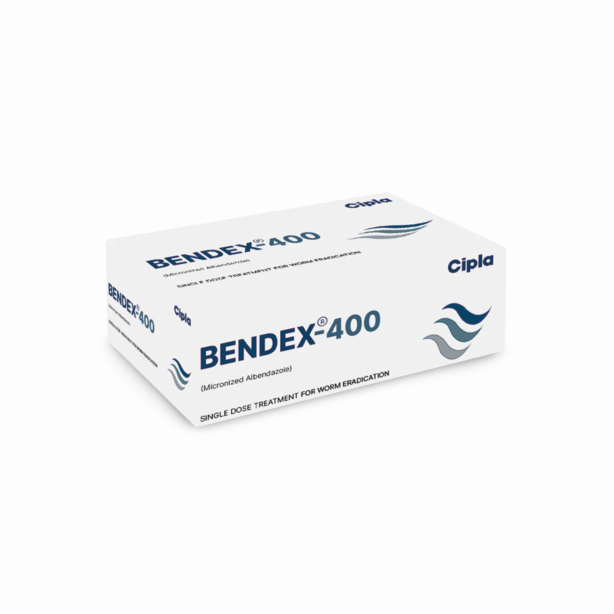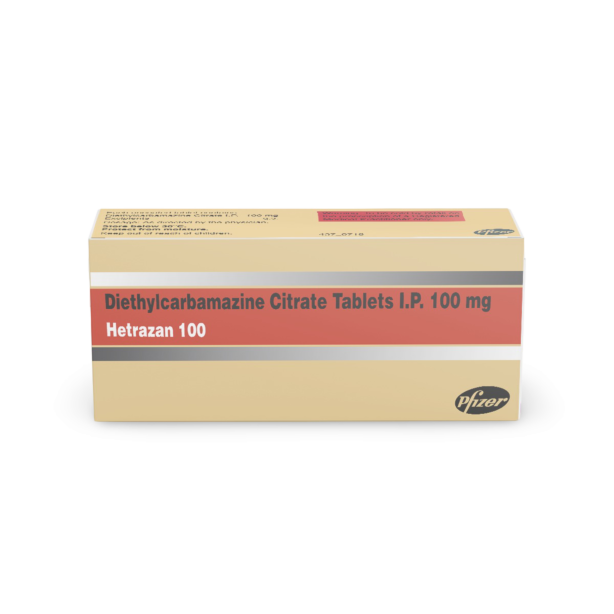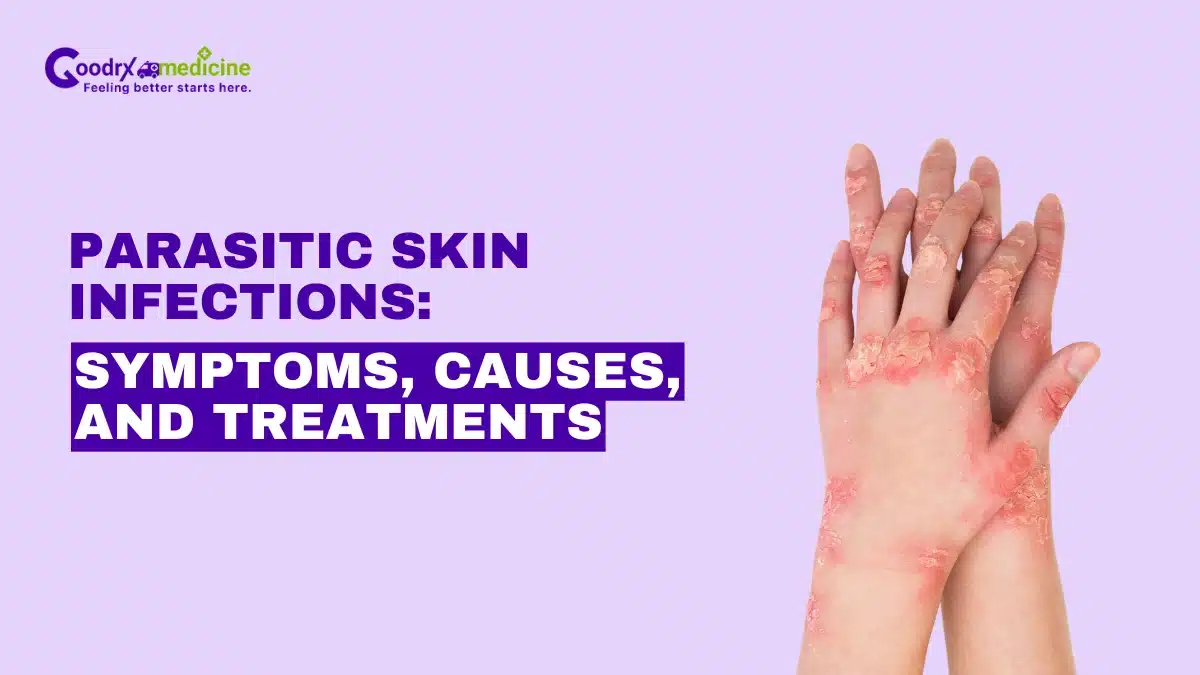Parasitic skin infections may sound scary, but they’re more common than you think. Around 200 million people worldwide deal with some form of it each year.
These infections occur when tiny organisms called parasites live on or in your skin. They can cause itching, rashes, or bumps, but the good news is they’re treatable. Most people recover fully with proper care.
If you or someone you know has unusual skin changes, don’t panic. These infections often look worse than they are. With the proper steps, you can feel better and stop the spread.
This article covers the causes, symptoms, types, and management of infections. It also explains when to see a doctor.
What are parasitic skin infections?
It is one of the types of parasitic infections. Parasitic skin infections happen when parasites live on or in your skin. Parasites are tiny organisms that need a host to survive; your skin becomes their home. These infections are common in warm, humid places but can affect anyone.
Save up to 90% on your medicine bills

Bendex 400 Tablet

Flagyl 400 mg

Hetrazan 100 Tablet

Zentel 400 mg
How do parasites affect your skin?
Parasites can lead to various skin problems, including itching, redness, and swelling. Some dig beneath the skin, while others live on hair or clothing. In severe cases, they may cause rashes or ulcers and can easily spread from person to person.
How do you get parasitic skin infections?
Common ways these infections spread include:
- Direct skin-to-skin contact with an infected person.
- Sharing towels, bedding, or clothing.
- Walking barefoot on contaminated soil or sand.
- Contact with animals carrying parasites.
- Living in crowded or humid settings.
Who is at higher risk?
While anyone can contract these infections, some groups are more vulnerable:
- Children in daycare or schools
- Travelers to tropical regions
- Those with weakened immune systems
- People in shared living spaces
- Pet owners
Maintaining good hygiene and being mindful of your surroundings can help reduce the risk.
Types of parasitic skin infections
Many types of parasitic skin infections exist. Common parasitic skin infections in the United States include scabies, head, body, and pubic lice. There are also occasional cases of cutaneous larva migrans, particularly in southern states, and rare instances of Leishmaniasis among travelers. While these infections are more prevalent in tropical regions, they still occur in the U.S.
Here are more than 5 types of parasitic skin infections you should know about:
1. Scabies
Scabies is a common parasitic skin infection caused by the mite Sarcoptes scabiei. It causes intense itching and red bumps as the mite burrows under the skin. Scabies spreads easily through close contact, so prompt treatment is crucial.
2. Lice infestation
Lice are small insects living on hair or clothing:
- Head lice on the scalp and hair
- Body lice on clothes, feeding on skin
- Pubic lice in private area hair
They cause itching and sometimes rash, spreading via close contact or sharing items.
3. Cutaneous Larva Migrans
This infection results from hookworm larvae entering the skin, often through the feet, causing red, itchy tracks. It usually occurs when walking barefoot on contaminated soil or sand.
4. Tungiasis
The sand flea Tunga penetrans burrows into the skin on feet and toes, causing pain, swelling, and itching. If untreated, it can lead to severe skin infections.
5. Leishmaniasis
Leishmaniasis, caused by a parasite from sandfly bites, leads to painful skin ulcers that take a long time to heal, significantly affecting skin health.
6. Myiasis
Myiasis occurs when fly larvae invade an open wound, causing painful sores and swelling. If not treated promptly, it can lead to skin ulcers.
Some, like scabies, are contagious and spread by touch or sharing items. A contagious parasitic infection of skin with intense pruritus can spread quickly in homes, schools, nursing homes, and dormitories, so early treatment and precautions are essential.
Signs and symptoms to look for
A parasite infection skin rash can look different depending on the type of parasite. Seek medical help if you notice these skin parasitic infection symptoms:
- Intense itching, especially at night
- Red bumps, blisters, or rashes
- Thin, wavy lines on the skin (burrowing parasites)
- Sores or ulcers that don’t heal
- Visible bugs or eggs in hair or on skin
How do parasitic skin infections affect you?
Most parasitic skin infections are not dangerous if treated early, but they can cause:
- Severe itching and discomfort
- Sleep loss
- Skin damage or infection from scratching
- Emotional stress or embarrassment
- Time off work or school
Some infections, like a contagious parasitic infection of skin with intense pruritus (itching), can spread quickly in families or communities. Some, like Leishmaniasis, may cause lasting skin damage if left untreated. In rare cases, the parasite spreads to other parts of the body..
What should you do if you have a parasitic skin infection?
If you suspect an infection:
- Avoid scratching to prevent infection.
- Keep affected areas clean and dry.
- Don’t share personal items.
- See a doctor for diagnosis and treatment.
Early treatment helps you recover faster and prevents the spread.
How are parasitic skin infections diagnosed?
Doctors may:
- Examine your skin.
- Take a scrape to check for mites or eggs.
- Inspect your hair for lice.
- Ask about recent travel or animal contact.
Proper diagnosis ensures the right treatment.
Parasitic skin infection treatment options
Treatment depends on the type of infection you have. Here are some common parasitic skin infection treatment options:
- Topical creams/lotions: Permethrin or Dimeticone are effective treatments for scabies and lice infestations, helping to eliminate these parasites and alleviate symptoms.
- Washing clothes/bedding in hot water: Doing this kills parasites and eggs, ensuring a thorough clean and reducing the risk of reinfestation.
- Treating household members: This prevents reinfestation and helps ensure that the entire living environment is free from parasites and pests.
- Skin care: Keeping skin clean and dry reduces symptoms and helps prevent irritation, allowing the skin to heal and maintain its natural barrier.
- Oral medications: Ivermectin or Albendazole can be effective options for systemic infections, depending on the specific type of infection and the underlying parasite involved.
Always consult a doctor before treatment.
Natural remedies for parasitic skin infections
Some people try natural remedies. These may help mild symptoms, but are not replacements for medical care:
- Tea tree oil: It may ease itching, but there is limited evidence that it kills parasites.
- Neem oil: It has been traditionally used and has some effectiveness against mites.
- Aloe vera: This is known to soothe skin, but needs more research.
- Cool compresses: It can relieve itching.
Consult your doctor before you use any natural remedies, especially if you have other health conditions.
Myths and facts about parasitic skin infections
Here are some myths about parasitic skin infections:
Myth 1: Only dirty people get parasitic infections.
Fact: Anyone can get parasitic infections because parasites spread through various means such as contact, insect bites, contaminated food or water, not just poor hygiene or cleanliness.
Myth 2: Parasites only live in poor countries.
Fact: Parasites are found worldwide, including in developed countries. They are more common in warm, crowded, or tropical areas but can affect anyone regardless of location.
Myth 3: You can get rid of parasites by just washing.
Fact: While washing and good hygiene reduce risk, they do not guarantee the removal of all parasites. Medical treatment with antiparasitic medications is often necessary to fully eradicate infections.
Conclusion
Parasitic skin infections occur when tiny organisms invade your skin, causing itching, rashes, and sometimes serious complications. They spread through direct contact, contaminated surfaces, and even soil or animals. People in crowded or tropical areas, children, travelers, and pet owners face a higher risk.
Common types include scabies, lice, cutaneous larva migrans, tungiasis, Leishmaniasis, and Myiasis, each with unique symptoms and transmission. These infections, including contagious ones like scabies, can spread rapidly, especially in shared living spaces.
Recognizing early signs like itching, bumps, or sores is key to prompt treatment. Doctors diagnose infections through skin exams and lab tests; treatment often includes medicated creams or oral medications.
Natural remedies may soothe symptoms but shouldn’t replace medical care. During recovery, clean skin, avoid scratching and wash linens in hot water.

Frequently Asked Questions
What are the tiny white worms coming out of my skin?
The tiny white worms coming out of your skin might be minor bugs called parasites. They can live under your skin and sometimes come out. See a doctor or health worker to check and help you get rid of them safely.
How long does it take to get better from parasitic skin infections?
You usually recover from parasitic skin infections within 1 to 2 weeks. Take the medicine your doctor prescribes daily and keep your skin clean and dry. Following the treatment properly helps you feel better soon.
Is a parasitic skin infection caused by the itch mite?
Yes, the itch mite can be one of the causes of a parasitic skin infection. When the mite burrows into your skin, it causes itching and small bumps. This infection is called scabies. It spreads easily from one person to another through close touch or sharing clothes and bedding.
What parasite can infect both the skin and the intestines?
A parasite called hookworm can infect both your skin and intestines. It can enter your body through your skin, usually your feet, and then move to your intestines. There, it can cause problems like stomach pain and tiredness. You should keep your skin clean and wear shoes to stay safe.
How do parasitic skin infections differ from bacterial or fungal skin conditions?
Parasitic skin infections happen when tiny bugs or worms live on or inside your skin. Bacterial skin conditions come from harmful germs called bacteria. Fungal skin problems occur because of fungi, like yeast or mold. Parasites move or bite, but bacteria and fungi grow and spread on your skin.
When referencing outside resources, GoodrxMedicine always provides full citations. To learn more about the measures we use to maintain the quality of our content, please review our Content Information Policy.











